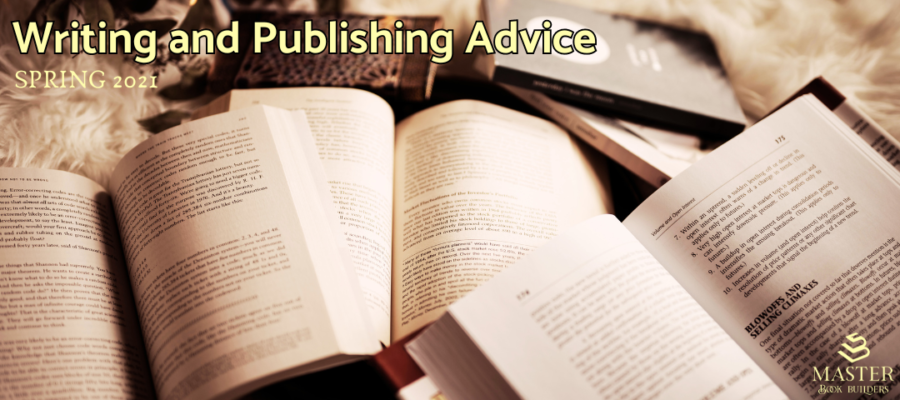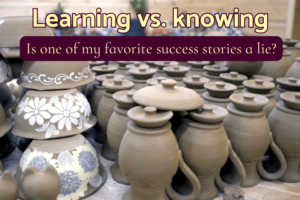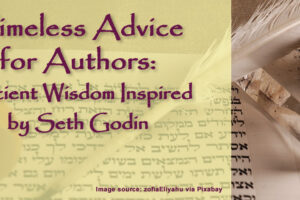First, the writing advice. Because, generally, writing comes before publishing.
1. Take yourself seriously.
If you don’t take yourself seriously, no one else will, either. This means treating your writing as more than an afternoon hobby. If you’re able to write and publish by treating your work as an afternoon hobby, why are you reading this blog post?
Malcolm Gladwell, in his popular book, Outliers – The Story of Success, tells us it takes 10,000 hours of practice to become a master. This is not to say you will be the greatest novelist or inspirational writer of all time after 10,000 hours. It merely means, you must write to be a writer.
James Clear, in his book, Atomic Habits, says,
If you do it, you are it. If you talk about it, you are not it.
Oversimplifying a bit but the message is clear – in order to be what you want to be you must do more than just talk about it. If being a writer, a published writer, is what you want to be, you must write. And then, you must publish. In the former instance, you are allowed to call yourself a writer. “I write,” you will say, when asked what you do. But, when asked if I’ve ever read anything you’ve written, you want to say, “You might have. Last year I published…” This is better than, “Probably not. I’ve never published anything.”
2. When writing non-fiction, remember, you must still tell a story.
Your nonfiction book, no matter what it’s about, is not a report. Don’t think you can create a PowerPoint presentation and pass it off as a nonfiction book.
That detailed look at how to do something, complete with graphs and charts and diagrams, may be necessary, but make sure you’re telling a story about that detailed insight into what you do. Something the reader can relate to. The story of you. The story of how you were just like the reader, once upon a time, and if they read all the way to the end, the reader can become successful, just like you.
A good place to start that story is in the introduction. That’s where you get to be you, the person, before you’re you the business professional. You, the person, is what will sell the reader on your advice. If she begins to feel connected to you via your story, she will want to learn all she can from you.
Yes, I know, a lot of people say they don’t read introductions. You can make them read it, though. You can make reading the introduction a necessary part of the book’s flow. Here’s how. Mention the introduction. “Remember when I told you about this or that in the introduction?” If I haven’t read the introduction, now I feel compelled to go back and read it.
The reason story is so powerful is because it’s what brings people together. It’s what gets our attention. We might need the graphs and charts and diagrams, but unless you’ve hooked us with a story, we’re just not going to pay attention.
3. Learn exactly what ‘story’ means.
I recommend that my nonfiction authors read fiction because the richness of the storytelling can inspire them to greater creativity. Creativity is essential to all works of art, but too many of us tend to leave it out of our nonfiction books, and yet it can provide such a powerful message when used correctly.
But before you begin to apply that idea to your writing, learn a little more about story. There are several universal elements to telling a good story. The setup – give us some insight into why you’re telling the story. The complication – yep, this is where you fall down the mountain, in the rain, and land in a great big mud puddle. The resolution – where you got up and continued on and were successful.
Storytelling is where your power comes in. You will help the reader transform her life by taking her on a journey, where she is the hero and you are the mentor/helper. Interestingly, I promise that you will also come to a threshold and be transformed, right along with her.

As you can see in the image here, the idea of story is to evoke feeling. If you get me to feel something, I pay attention. This is why charts and graphs are woefully bad to rely on. Yes, use them appropriately, but keep your eye on the prize – the reader’s attention.
There is a lot more to writing a story, of course, but one blog post cannot cover it all. Let’s move on the the publishing advice. And boy, is there a lot of that!
The most asked question I get, lately, is,
“How should I publish my book?”
Everyone is at least aware of “print-on-demand” today. This is the model used by Amazon and many other small presses or hybrid publishers. Back in 2005, when I founded Windsor Media Enterprises, or WME Books, as we called it, print-on-demand was still in its infancy. Not many people ‘got it’. (side note – all that’s left of that publishing company is this page, which lists our books. There is a new brand on the market using our WME Books description, so don’t be fooled. It’s not us any longer. Our publishing company closed years ago to pursue other big ideas.)
Today, print-on-demand (POD) is so popular, just about everyone uses it. Even many of the big publishing companies have print-on-demand divisions because it’s faster and easier.
The best reason to use this model, however, is to be your own publisher. When you command your own book, it’s production, and its publication, you are the boss. You get to do things like:
- Choose the title
- Choose the cover design
- Release it when you want to release it
- Write as long a book or as short a book as you like (though for nonfiction we recommend 200 pages)
- Manage royalties on your terms (better royalties, too)
- Manage sales and marketing without waiting for someone else to send you a report
- Buy author’s copies to sign and give away at book signings or in webinars/workshops
Things to know about being your own publisher using print-on-demand:
- You buy and own your ISBNs – you will need one for each kind of book, print, digital, audio
- You file your own copyright – you are copyrighted from day one but filing is just plain smart
- You find and work with your own editor and proofreader
- You engage your own people to read and provide testimonials
- You find your own foreword writer
- You create your own index
- You create and manage your own Author page on Amazon
- You build and manage your own website to support the book or books
- You create your own hashtags, images, and content for your social media campaigns
- You are project manager, designer, production manager, and master of how your book turns out. (of course, you will get help with many of these tasks, you don’t need to go it alone)
If it seems like there are too many “you” words in that list, let me share a secret with you.
Even if you get a traditional publisher to publish your book, you will be in charge of a lot of the above tasks. Your publisher does not do everything. Yes, a traditional publisher will get an ISBN and copyright for you. And, a traditional publisher will take care of the index. They might even help you create a webpage for your book. But they will also dictate how long your book is, what the cover will look like, and what the title will be, and when it will be released. And sometimes, the control the flow of royalties. I’ve known authors who waited months, and months, for royalty checks they were due.
In fact, if you don’t prove you have an established platform, with thousands of possible readers, traditional publishers won’t even talk to you. No matter how great your proposal is. Oh, yeah, I almost forgot – before you do or prove any of the above to a traditional publisher, you have to prove you can sell the book and earn back your royalty for the advance. At which time, they may choose to remove the book from print – few books make it to a second printing. (Side note: no you will not likely get a large advance to allow you the time off of work or life to write your book; an average advance is $5,000 but most people only get $2,500 or so… and once you’ve sold enough for the traditional publisher to make back their money, they generally wave bye-bye.)
Traditional publishers do not put a lot of effort or money into marketing your book. Unless you’re already famous. Or they see that you have 9 million Instagram followers. (ok, maybe it’s not 9 million; maybe it’s more like 20 -30,000, but do you have that many, right now?_

With print-on-demand, you own all the rights and set your own royalties and can keep your book in print for as long as it serves its purpose. Using POD as an Indie Publisher means you are in charge.
All of this is GENERAL advice. There are pluses and minuses to anything and publishing a book is no different. As a writing and author advisement company, Master Book Builders works with you hand in hand to smooth your path along the way. Our goal is to get you on Kindle for Amazon, with digital and print versions of your book. Audio is available but a separate project.
What other questions do you have? We cover a lot of this in our weekly Smart News email newsletter, also. Get on board now – you’ll be privy to inside deals and offers around writing and publishing, if you do. Oh, yes, since writing a book is much like starting a new small business, we work with you on that, too. We’re serial entrepreneurs ourselves, after all.
Send me your questions at yonne (at) yvonnedivita (dot) com.






Leave a Reply